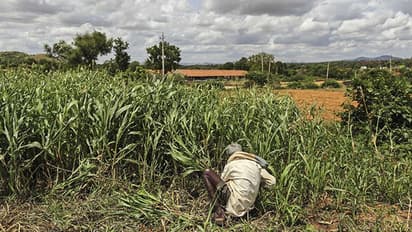
It looks like Indian politics will be slave to competitive populism of farm loan waivers for the next few years. Of the mandated 18% in agricultural loans of net banking credit, 8% has to be for small and marginal farmers as per RBI circulars. There is about Rs 10.38 lakh crores of agri loans out of which Rs 4.5 lakh crores are likely to be for small and medium farmer loans, the balance being allied sector, large loans etc. Hopefully, the fever would not spread to them as well.
Only the farmers who have borrowed from moneylenders are prone to committing suicide because of lender recovery pressure and social stigma; not those who borrow from commercial banks.
There is a huge problem of targeting crop loans as well as the benefits of waiver as this article will demonstrate.
In some prosperous southern states, nearly 80-90% of the land is cultivated/tilled by third-party lessees and tenants. The owner has in most cases has migrated to towns and cities within or outside the state. In less prosperous states this is 60-70%. Absentee landlordism is more the rule than the exception. To address agrarian distress both loans and waiver should ideally reach the tiller (whether he is the owner or tenant).
The information about tenancy is to be captured in the agriculture land records to be maintained by the revenue department. A sample (from Telangana where it is called Pahani /Adangal) is reproduced. This is the main revenue record which contains various details about owners and occupants or tenants, crops grown, liabilities on land, the Cultivator, land revenue, etc.
To ease the registering of repeated mortgage and release for annual crop loans now passbooks are being issued.
The owner’s details are entered in Col 12 and the Col 13. Because of fear of confiscation and enforced transfer by the State in favour of tenant and lessees (as has been done in some states in the ’60s and ’70s), it is learnt that in 90% cases the tenant’s details are never written.
The crop loans aimed at small and marginal farmers by design and logic should ideally reach these tenant cultivators. If his name is not mentioned, he can get the loans with NOC from the owner mentioned in the records, which never happens.
Loans are indeed taken in most eligible cases but by the absentee owners living in far-away towns and cities doing some private sector or government jobs or self-employed or running shops, etc. Banks are also willing more to lend to these since these are not subject to vagaries of weather. Since the tenure of loans are annual (or even less) and the next loans can’t be disbursed if there is a default, the repayment track record of crop loans is excellent.
Thus, because of the ecosystem of convenience and fear of land transfer by the executive or legislative fiat majority of crop loans (well in excess of 50-60%) in paper end up as short-term commercial or personal loans for non-cultivation purpose. As a result, cultivators continue to depend on informal sources like money lenders and chits. As mentioned before, suicides mostly happen in these cases due to local pressure.
Worse still, like the ‘everyone likes a good drought’ syndrome, every suicide is misused by ‘others’ to force write-offs of ineligible loans. So while the agriculture distress is real, the dramas and demonstration often may not be genuine, and solutions mistargeted.
The government – Centre and state (or RBI) — should first establish the true extent of actual tiller loans. This would require two quick but detailed surveys of agricultural land records and the actual recipient (tiller or absentee owner) of agri-loans. Based on this the local administrative authorities should quickly complete the records (it is supposed to be annual on-going exercise anyway).
The political parties should work together and evolve common criteria for write off. Most crop loans are current (not more than one season old); hence any dated criteria would prove ineffectual for the really distressed farmers. It should ideally be up to the last sowing season. In many cases, the outstanding loans may not be more than 2 such tranches.
Ideally, the write-offs should be specified as a percentage of the loan outstanding so that the psyche of having to repay still remains.
What about those who have not borrowed money at all or from moneylenders? It is to be realised that nearly half of people working in agriculture are landless labour. This and the 35-45% of families engaged in non-farm activities in rural areas are likely to rue their fate and perhaps raise their own demand.
Maybe a DBT to everyone in the affected region will be the most appropriate solution. They can repay the moneylenders or banks, whosoever they have borrowed from or recoup losses if they had not borrowed at all. This will not disturb the repayment culture or slow down banks.
The repayment record amongst the small and marginal borrowers in rural areas is exemplary so far. This is because of their dependence on local money lenders down the ages and the money lenders’ close follow-up. This culture of repayment will definitely collapse. Before the recent Insolvency and Bankruptcy Code, there was a culture of belligerence among some defaulting industries and the bankers were toothless. IBC has had a whiplash effect because of which large recoveries or settlement is taking place.
(The writer is the author of Making Growth Happen in India)